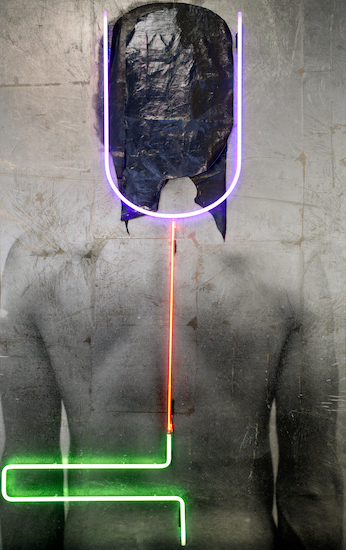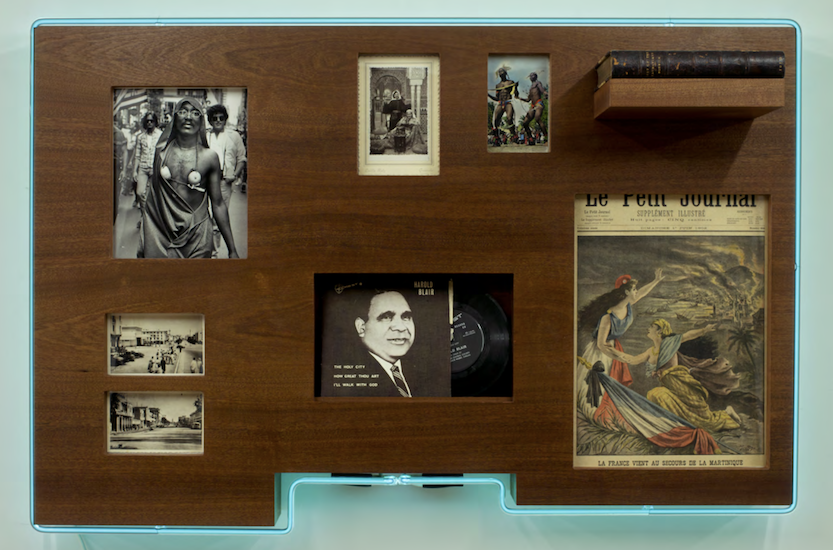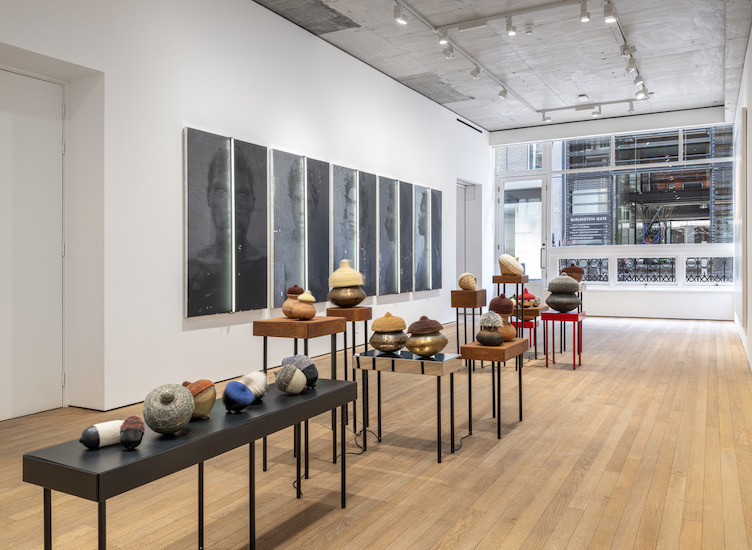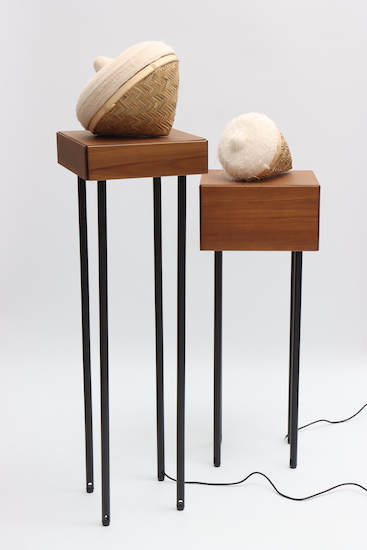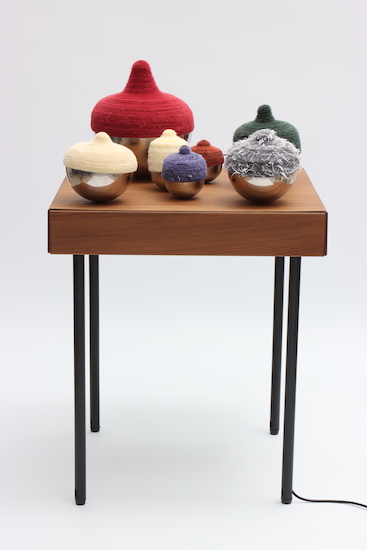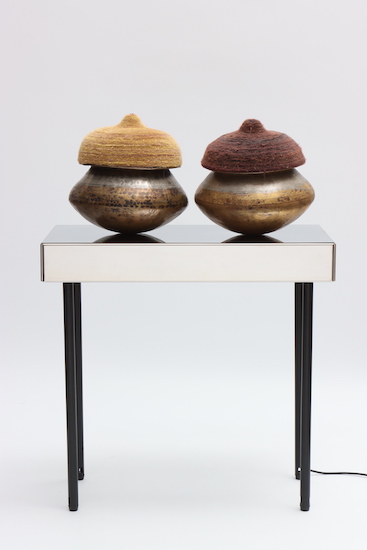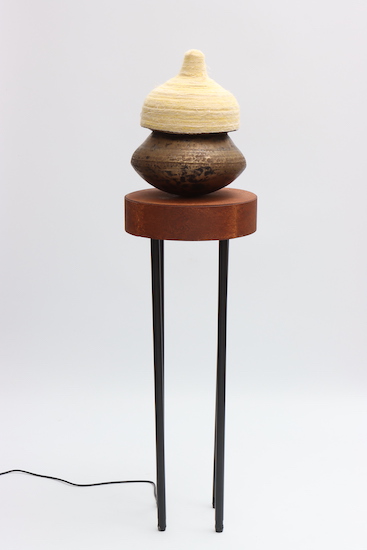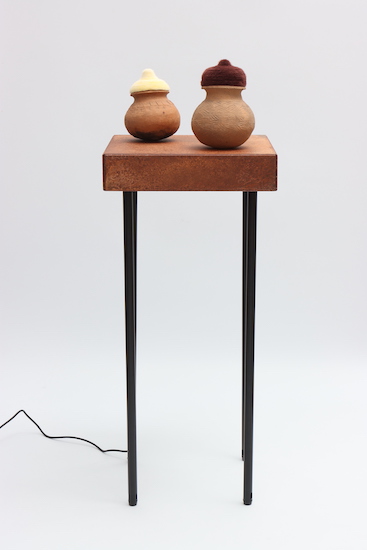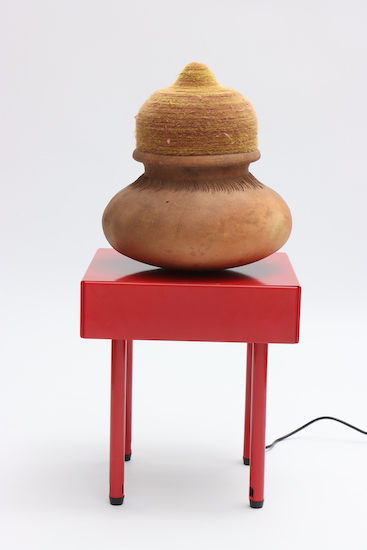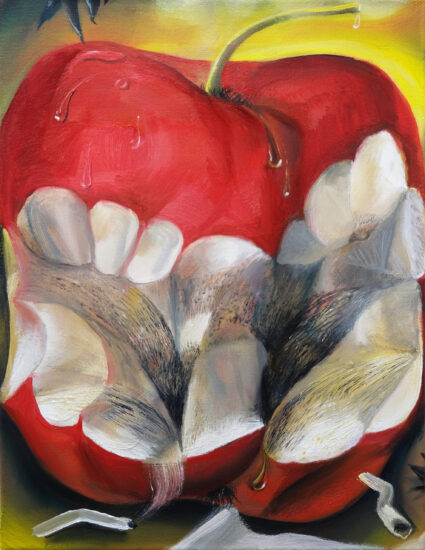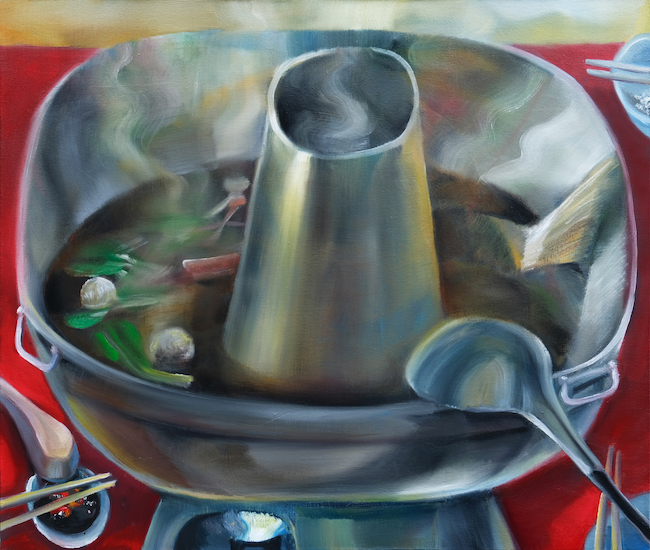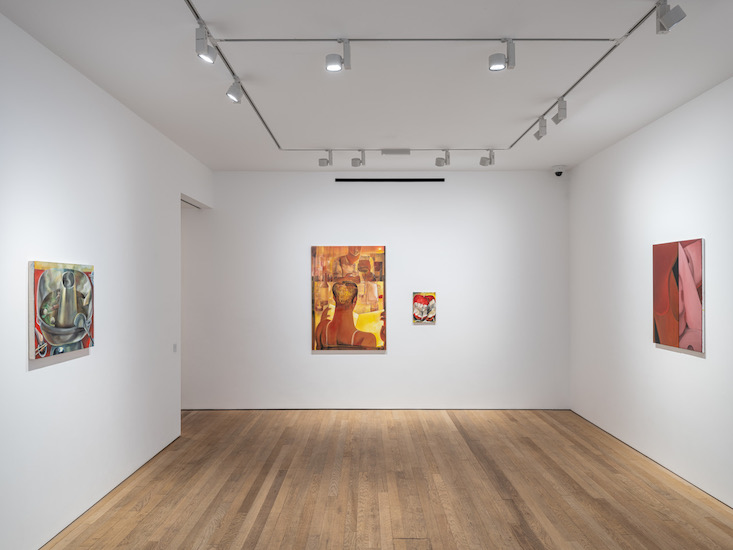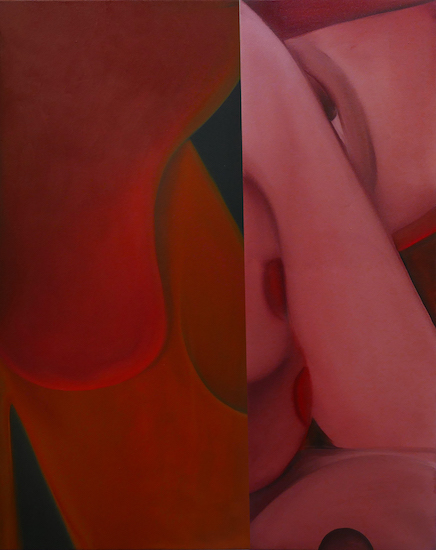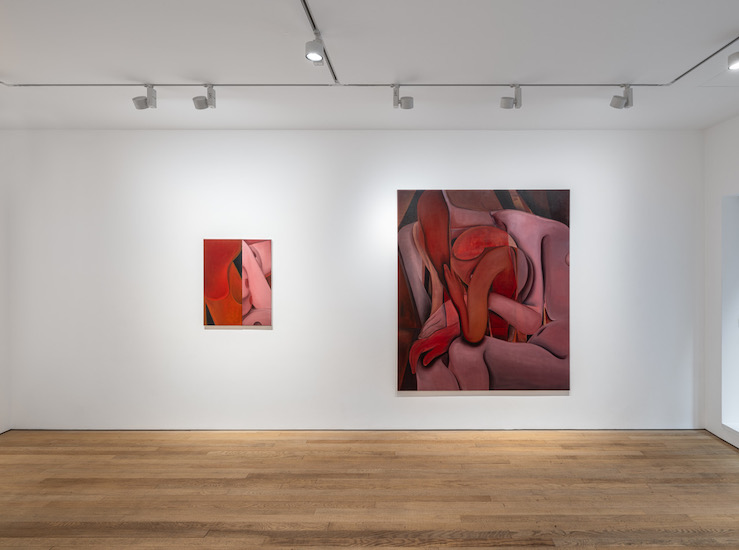Ames Yavuz is pleased to mark its debut in London at Frieze, No. 9 Cork Street, with a presentation in two parts.
The first, titled Holding Ceremony, features Brook Andrew (b. 1970, Australia) and Pinaree Sanpitak (b. 1961, Thailand). Bringing together two of the most important artists working in the Global South today, Andrew and Sanpitak both explore the body as a vessel for memory and as a site for ceremony.
Andrew’s practice is grounded in his perspective as an interdisciplinary artist with Wiradjuri, Ngunnawal (Indigenous Australian) and Celtic ancestry. For Holding Ceremony, he magnifies and layers 19th-century ethnographic portraits representing his ancestors. These ‘orphan’ portraits (a term coined by Australian Indigenous librarian and scholar Maxine Briggs) have been sourced from the collections of the Royal Anthropological Institute, London, and the Museum of Archaeology and Anthropology, Cambridge, with further research at the musée du quai Branly, Paris.
Andrew’s works convey evocative stories of the history of colonial documentation and of the human condition, which reveal a different narrative of Indigenous pride, survival, beauty and cultural identity. These recontextualised archival images — combined with drawing, painting and other processes on reflective materials — disrupt historical amnesia and empower ancestral narratives. This can be seen in Andrew’s Back of Man II, which depicts the human figure from behind, obscured with black plastic tape and outlined with neon in a way that lifts the portrait out from the mess of the “Colonial Wuba (hole)” and into a luminous space for honouring memory and ceremony. In his Gun-metal Grey (Two tone) series, the gentle but powerful action of cleaving the imagery into silver and grey unsettles the eye so that it cannot rest on a singular view of the subject.
Over four decades, Sanpitak has built an enigmatic inventory of symbols that distil women’s bodies into their most elemental parts, emphasising a deep sense of dignity and ritual. Her central motifs of the breasts and curving profiles mirror the iconic forms of vessels, offering bowls and Buddhist stupa, seamlessly weaving together the sacred and the profane. Alongside a new large-scale painting and historic drawings, Sanpitak presents sculptures that gently rock and twirl.
Collectively titled Balancing Act, each sculpture combines found or made vessels with hand-torn stacks of mulberry paper shaped into a ’breast stupa’, Sanpitak’s signature melding of the woman’s breast with a Buddhist shrine. These sculptures are placed on top of moving platforms as a symbol of physical and spiritual nourishment. Drawing on materials and items common to everyday life, Balancing Act engages the viewer through its interplay of the familiar domestic, unusual form, and subtle movement. Sanpitak reminds us that there are reverberations in each and every gesture, instilling a quiet poetry into the objects we touch and the spaces we hold. Characterised by tenderness and poise, Sanpitak’s works are tethered to an ongoing captivation with the body, womanhood, nurture and spirituality.
In our second presentation, titled POV, Ames Yavuz will showcase works by two of the most exciting young painters from the Asia-Pacific: Alvin Ong (b. 1988, Singapore) and Julia Trybala (b. 1992, Australia).
For POV, Ong presents paintings that capture the quiet desires of solitude and queer longing, transforming the everyday into a site of dream-like spectacle. As the artist notes, “my paintings function as windows and mirrors, they reflect something of myself but also of the world we live in”.
Trybala centres her work on the complexity and dynamics of human relationships, drawing inspiration from personal experiences, relationships and conversations with friends and family. Maintaining an astute dialogue with art history, questioning how feminine bodies have been represented, its tropes, and how these bodies occupy physical space in the art canon and the world.
Together, Ong and Trybala explore how we inhabit our bodies and how we search for intimacy in the enigmatic and transformative corners of the self.
